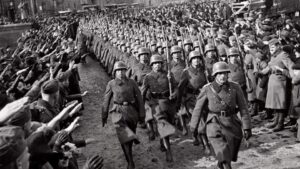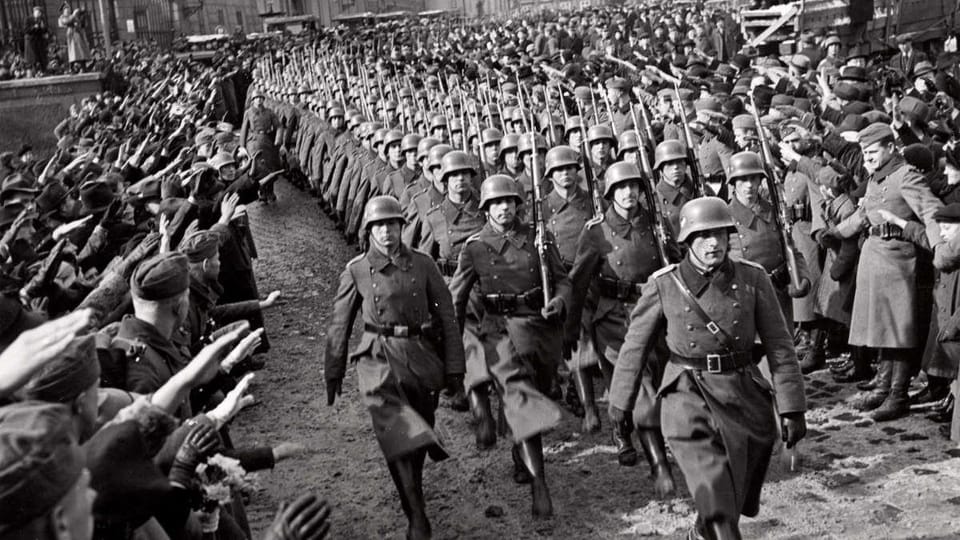Forgotten Friday – The Occupation of Czechoslovakia.
On 15th March, 1939, Nazi Germany, violated the Munich Agreement of 1938 and occupied the remaining Czechoslovakia. This event, known as the German occupation of Czechoslovakia, led to the establishment of the Protectorate of Bohemia and Moravia. The occupation marked a significant step in Hitler’s expansionist policies and ultimately contributed to the outbreak of the Second World War.
The events leading up to the occupation of Czechoslovakia are rooted in the aftermath of World War I and the Treaty of Versailles in 1919. This redrew the map of Europe and dismantled the Austro-Hungarian Empire. Czechoslovakia emerged as a new country, comprising Czechs, Slovaks, and other ethnic groups.
In the late 1930s, Adolf Hitler’s Germany began aggressively pursuing territorial expansion, aiming to unite all German-speaking peoples under Nazi rule, a policy known as Lebensraum (“living space”). One of the areas coveted by Hitler was the Sudetenland, a region in Czechoslovakia with a significant ethnic German population.
In September 1938, Hitler demanded the Sudetenland be returned to Germany, claiming mistreatment of ethnic Germans by the Czechoslovak government. This crisis escalated tensions in Europe, with fears of another world war looming. To avoid conflict, British Prime Minister Neville Chamberlain, French Premier Édouard Daladier, Italian dictator Benito Mussolini, and Hitler met in Munich for negotiations.

Photo Copyright – German Federal Archive (Deutsches Bundesarchiv)
The Munich Agreement, signed on 30th September 1938, allowed Germany to annex the Sudetenland, with the condition that Hitler would respect Czechoslovakia’s existing borders. Czechoslovakia, which was not invited to the Munich conference, reluctantly agreed to this arrangement under pressure from its Allies. This was a significant turning point in the prelude to the war as the Allies granted Hitler permission to violate the terms of the Treaty of Versailles.
However, less than six months later, Hitler violated the Munich Agreement by occupying the rest of Czechoslovakia on 15th March 1939. Under the pretext of protecting ethnic Germans and asserting German interests, German troops marched into Prague and other Czechoslovak cities, swiftly dismantling Czechoslovakia’s sovereignty.
As a result of the occupation, the Czech lands were transformed into the Protectorate of Bohemia and Moravia, directly controlled by Germany, while Slovakia became a nominally independent state under the leadership of Jozef Tiso, who was sympathetic to the Nazi regime.

German troops at Prague Castle, March 15, 1939, photo: Public Domain
The German occupation of Czechoslovakia further emboldened Hitler and signalled to the world his willingness to aggressively pursue his expansionist goals, setting the stage for the outbreak of the Second World War less than six months later.


